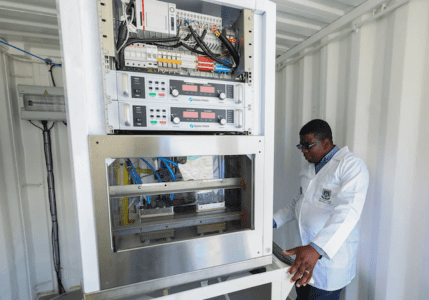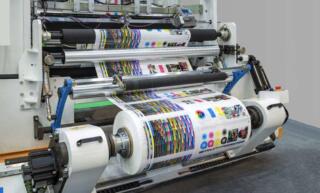
Technology: 5 key trends for 2023
Changes in technology have the potential to create shared prosperity and smart solutions to the world’s biggest challenges. At the same time, its exponential pace risks overwhelming existing institutions, leaving us exposed to uncontrolled risks. Geopolitical crises, rising polarization, and a looming climate compound this danger.
There is an urgent need for leaders to seize the opportunity to direct technology toward positive ends. Here are five developments they should be prepared for in the year ahead.
1. Green-tech at a tipping point
Thanks to continual technological improvements over the past decade, solar and wind power costs have fallen drastically, making renewables cheaper than fossil fuels. According to some estimates,, switching from fossil fuels to renewable energy will help economies save $12 trillion globally by 2050.

Thanks to continual technological improvements over the past decade, solar and wind power costs have fallen drastically. Image: Oxford University
Governments and industry leaders will focus on scaling existing green technologies and developing new ones in 2023. The goal to keep global warming at less than 1.5 degrees Celsius above pre-industrial levels seems increasingly out of reach, but so do the catastrophic scenarios, which were still deemed likely a couple of years ago.
One of the most promising technologies we can expect progress in is green hydrogen, a new clean-burning energy source that allows energy from renewables to be captured and transported long distances – from regions with abundant wind or solar energy resources to energy-hungry areas thousands of kilometers away.
Nuclear fusion is another green technology to watch in 2023, following the recent proof of concept that it can generate more energy than is required to kickstart the fusion process. Although still years from achieving energy at scale, these latest results are likely to spur further research to develop the technology, bringing us closer to a future in which nuclear fusion could provide near-limitless, safe, and clean energy.
2. Hyper-connectivity and cyber-resilience
Economic and geopolitical dynamics are pushing globalization into retreat and propelling the fragmentation of cyberspace alongside competing for political blocs. However, the structural forces of technological progress are moving towards more connectivity, not less. In the coming year, 15 billion devices will be connected to the Internet of Things (IoT), which is expected to double by 2030. A principal driver of this trend will be the rapid expansion of 5G coverage in 2023, allowing devices to communicate faster and improve their overall performance.
Our dependency on connected devices and infrastructures is growing exponentially, and so do the risks of collapse by accident or as the result of an attack. Governments and regulators must make efforts to ensure that connected devices comply with the latest cybersecurity standards. This includes the European Union pushing ahead with its proposed EU Cyber-resilience Act and the Biden administration introducing a cybersecurity labeling rating program for IoT devices.
3. Quantum computing R&D
Quantum computing, which uses subatomic particles to create new ways of processing and storing information, promises to be the future of computing. With the promise of operating orders of magnitude faster than the best processors available today, quantum technology will help to solve complex problems in a fraction of the time.

Government and industry investment in quantum computing means we will likely see rapid progress in hardware and software in the coming year – Image: World Economic Forum.
Although quantum technology is still in its infancy, huge government and industry investment means we will likely see rapid progress in hardware and software in the coming year and quantum products starting to come onto the market. At the same time, business and government leaders will step up efforts to understand and mitigate the risks the technology poses, from crippling prevailing cryptography to the transformation of warfare.
4. Gene editing goes mainstream
Until recently, CRISPR-Cas9, the gene-editing technology that won its developers the 2020 Nobel Prize in Chemistry, has been used as a research tool to understand the importance of specific genes and discover new drugs. Since the first person received gene-editing therapy three years ago, the technology has been used to treat congenital blindness, heart disease, and sickle cell disease, among others. And while primary use cases are diseases with a single-gene mutation, early research suggests that conditions like Alzheimer’s and chronic pain could also be treated with CRISPR.
In 2023, we will likely see an expansion of gene editing in medicine and other sectors, powering a multi-billion-dollar industry and posing complex ethical dilemmas.
5. Artificial intelligence everywhere
Towards the end of 2022, OpenAI’s interactive conversational model Chat GPT attracted more than a million users in just five days and triggered a new debate on the opportunities and risks of artificial intelligence (AI). With AI spending forecast to exceed $500 billion in 2023, rapid advances in adaptive and generative AI will occur.
Adaptive AI can continuously retrain its models to learn and adapt based on new experiences without needing developers to rebuild them, leading to faster and better outcomes. Generative AI uses neural network models to create something new. Recent releases of text-to-image and text-to-video generators appeal to consumers but raise significant concerns about disinformation, harmful content, copyright protections, and algorithmic biases. Regulators and online watchdogs will be looking at this over the coming year.
As the late French cultural theorist Paul Virilio observed, they also break into new ways when things work in new ways. When we invented the ship, we also invented the shipwreck. The same holds true for new technologies – and the stakes are high.
This should not make us afraid of technological progress, but it should make us humble and mindful of progress being hard-earned and easily lost. Advancing technological change and rolling out new technologies at scale to meet the world’s most pressing challenges is the great imperative of our day and age. If we meet that challenge, our reward will be more prosperous and resilient economies and societies.
This World Economic Forum article was published in collaboration with Forbes. World Economic Forum writers are Sebastian Buckup and Greta Keenan.




